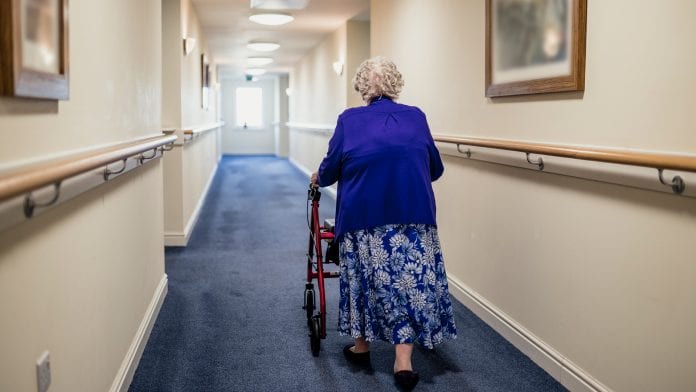
An early draft of a recent study has shown that up to 10,000 more people may have died in care homes from COVID-19 than previously estimated.
The study, carried out by health economists and data scientists at the University of Manchester, is the first independent analysis of the daily death data sent to the Care Quality Commission in the first wave of the COVID-19 pandemic by 13,630 care homes.
The study revealed that excess deaths were mainly in larger care homes that provide services to older people and those living with dementia, noting they were affiliated to a branded chain of providers where staff may be more likely to work in more than one place.
Analysing data
Comparing data between January 2017 to August 2020 with data from April to August 2020 to calculate excess deaths in care homes during the pandemic, the study highlighted no significant differences between profit and non-profit care homes, and estimated that 29,400 more care home residents, directly and indirectly attributable to COVID-19, died during the first 23 weeks of the pandemic than expected from historical trends. This is an equivalent to 6.5% of all care home beds available in England.
The researchers say that only 65% of the excess deaths were officially reported to be directly attributable to COVID-19, meaning 35%, equating to 10,000 people, died in those care homes and were flagged as unrelated to COVID-19.
Dr Marcello Morciano, a Senior Lecturer in Health Policy and economics at the University of Manchester, said: “Thousands of people have died from COVID-19, but because many weren’t tested, some death certificates failed to attribute cause of death to the virus either directly or indirectly, especially at the beginning of the pandemic. This study shows that in care homes, mortality figures attributable in some way to COVID-19 have been hugely underestimated: the figure could be as high as 10,000 people.
“But it also tells us where many of the people who died in excess to what expected based on historical trends were living in care homes that experienced COVID-19-related fatalities and that has important policy implications in terms of prioritising resources in the future.”
Their analysis also showed that almost all the excess deaths were recorded in the quarter of care homes which reported COVID-19 fatalities, mainly care homes that provide nursing services.
Prioritising residents
Official estimates from England and Wales have reported aggregated excess deaths by place of occurrence, however, they do not account for care home residents dying in other settings, such as in hospitals.
Professor Evan Kontopantelis from The University of Manchester added: “In care homes across Europe, at the beginning of the pandemic staff were left without PPE, testing regimes were poor, and care home residents who needed hospital treatment didn’t get it. And in mid-March, Hospital Trusts discharged medically fit patients to care homes to free capacity. Mandatory testing prior to discharge was only brought into effect a month later.
“These factors have all played their part in the higher figure of deaths we have described. We also believe that knowing the care home characteristics associated with COVID-19 outbreaks and excess deaths may help in designing rapid responses.”
Dr Jonathan Stokes from The University of Manchester said: “The large excess of deaths in care homes shows England, and other countries, didn’t adequately protect this vulnerable group in the first wave of COVID-19.
“Care home residents should be a clear priority for managing supply of rapid testing and other interventions in future waves, balancing protection from mortality with quality of life and other important outcomes.”
The paper, ‘Excess mortality for care home residents during the first 23 weeks of the COVID-19 pandemic in England: a national cohort study’, has not yet been peer reviewed, but is available on the pre-print server medRxiv. The authors say they felt there was an urgency to pass on the information to the public and policy makers.









Why dont we see daily care home deaths any more ?
Why dont we see daily care home death figures any more